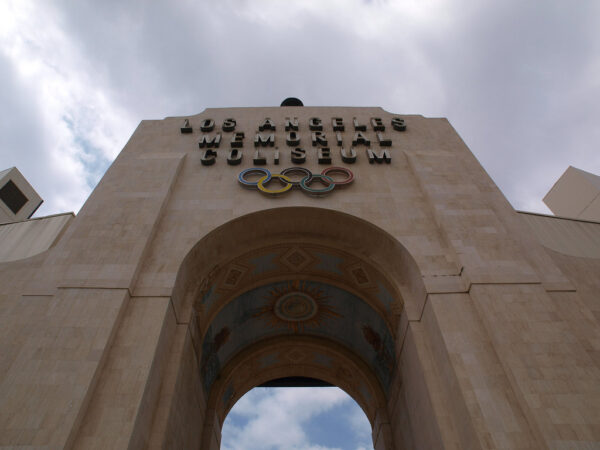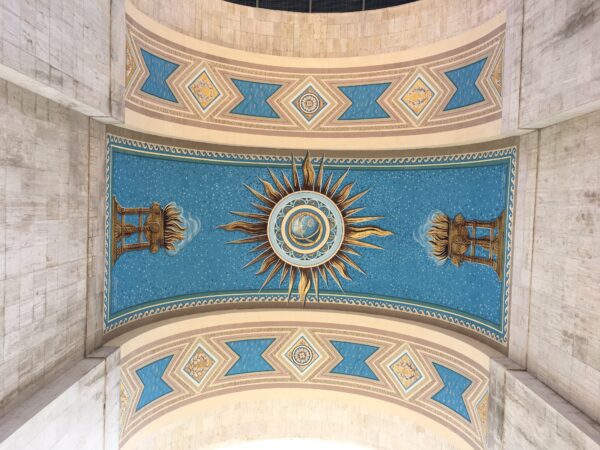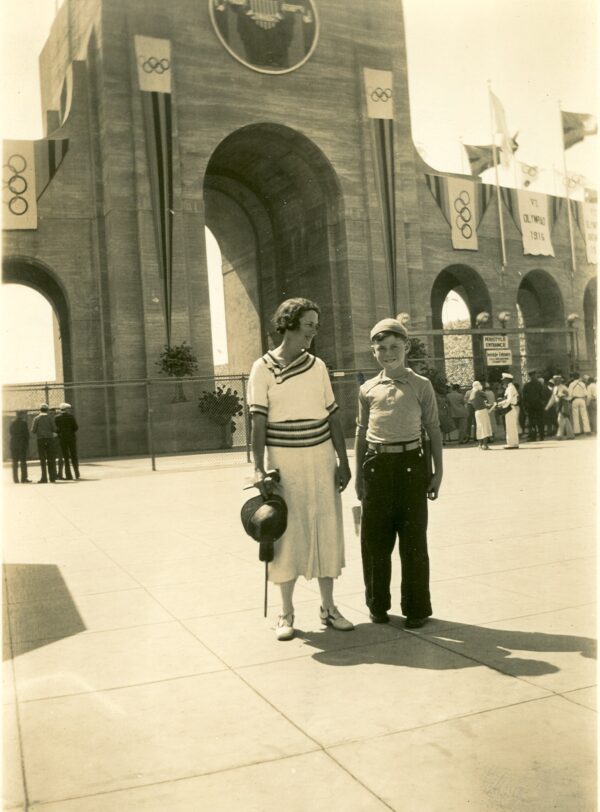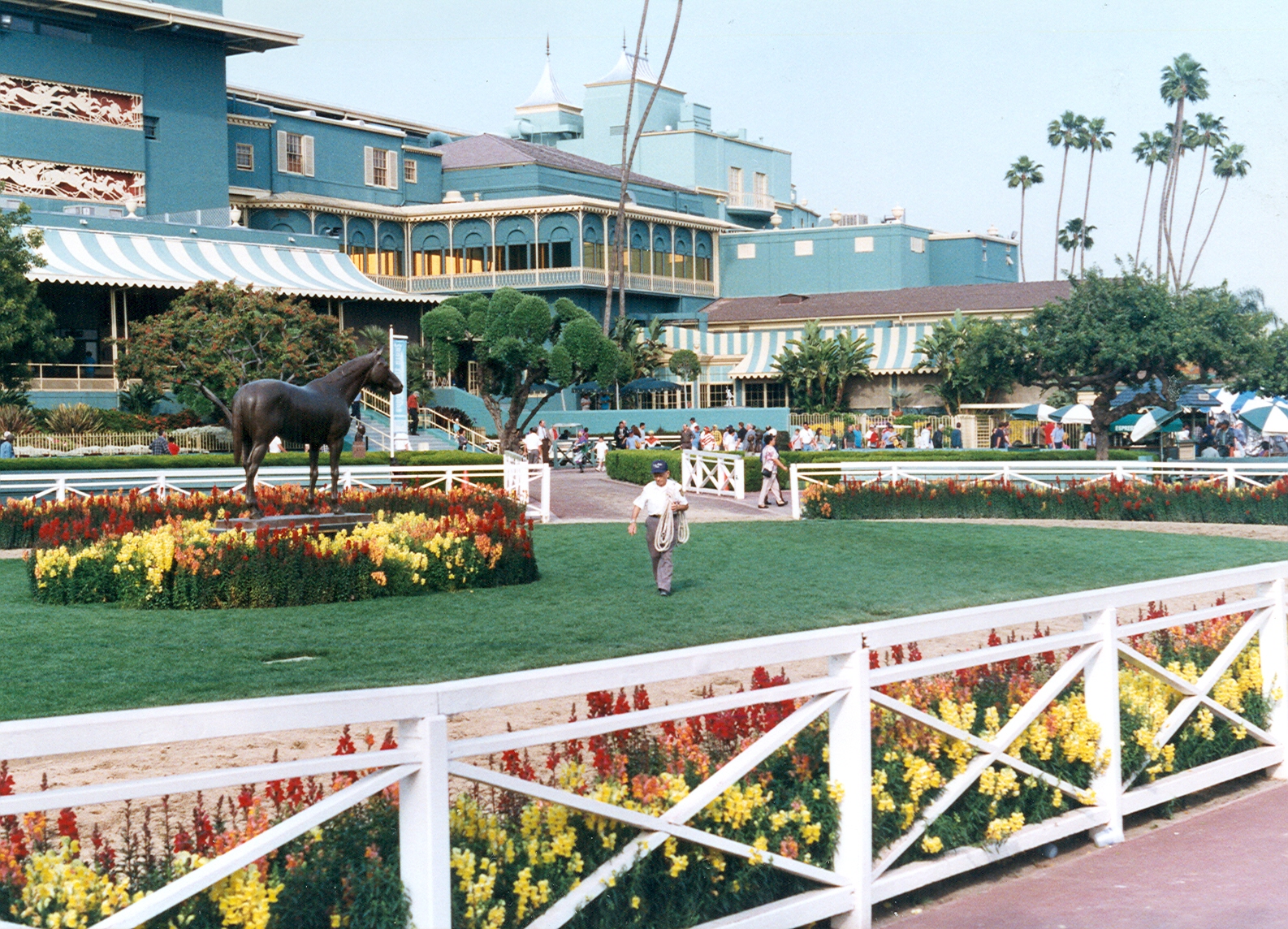
Place
Los Angeles Memorial Coliseum
The John and Donald Parkinson-designed Coliseum represents Los Angeles' civic achievements in the early twentieth century.
Saved


Place Details
Address
Architects
Year
Style
Decade
Property Type
Government Officials
Community

Photo by U.S. Army Corps of Engineers Los Angeles District (Flickr)
Overview
Located in Exposition Park, the Los Angeles Memorial Coliseum holds national and international significance as the centerpiece of the 1932 and 1984 Summer Olympic Games. Since the 1920s, it has served as the backdrop to countless sporting and civic events.
The Coliseum is one of only a handful of National Historic Landmarks in Los Angeles. It is also listed on the National Register of Historic Places and the California Register of Historical Resources.
In August 2019, USC completed a $315 million renovation including a new press box on the south side of the field, new seating throughout, and updated amenities. The Conservancy worked closely with USC to ensure renovations complied with the Secretary of the Interior’s Standards for Rehabilitation.
About This Place
About This Place
The Los Angeles Memorial Coliseum was originally constructed between 1921 and 1923 as a tribute to local World War I veterans. Renowned Southern California architects John and Donald Parkinson designed the monumental Moderne structure, incorporating elements of the Egyptian, Spanish, and Mediterranean Revival styles.
The Coliseum represents Los Angeles’ transformation from a small city into a major metropolis in the early twentieth century. The city’s selection for the 1932 Olympics signaled its rising reputation within the United States, as well as the world at large. The Coliseum became the first stadium to house the Summer Games twice when the Olympics returned to L.A. in 1984.
The reinforced concrete, cast-in-place structure forms a colossal elliptical bowl. Evoking classical design elements, the east end of the stadium features a grand peristyle, which now contains the “Court of Honor” within the arches. The field was constructed thirty-two feet below grade and the terraced seating could originally accommodate 75,000 spectators.
The University of Southern California (USC) football team played its first game in the Coliseum in October 1923, just five months after the stadium was completed. The university continues to lease the structure today, which is jointly owned by the State of California, County of Los Angeles, and City of Los Angeles under the authority of the Los Angeles Memorial Coliseum Commission.
State and local officials conceived the Los Angeles Memorial Coliseum as a hallmark of civic pride within the newly created Exposition Park. Since the early 1900s, efforts had been underway to redevelop the surrounding lands for public use. The Los Angeles Natural History Museum (1913) was one of the earliest facilities to be completed.
The International Olympic Committee selected Los Angeles as the site for the 1932 Olympic Games in 1923, the same year that the Coliseum was completed. To accommodate larger crowds at the stadium, the City and County undertook an expansion project, bringing the total number of seats up to 101,000. John and Donald Parkinson returned as the project architects.
For the first time, athletes were housed within an Olympic Village, allowing more people to participate by reducing costs. Other rituals, such as the flying of the winning nations’ flags and the incorporation of national anthems, debuted here, and numerous world records were set during the games themselves.
The Olympics returned to Los Angeles in 1984. Much of the existing infrastructure throughout the city was reused, and the Coliseum once more hosted track and field events, as well as the opening and closing ceremonies.
The Coliseum also reflects a number of major sporting achievements, beyond the Olympic Games. The stadium was the first home of the Dodgers after the baseball team moved to Los Angeles from Brooklyn in 1958, and it hosted the country’s first Super Bowl in January 1967. Other professional football and basketball teams have played in the facilities as well.
In addition, the Coliseum hosted numerous political events, such as campaign rallies for Franklin D. Roosevelt and Dwight D. Eisenhouwer. John F. Kennedy accepted the the nomination for president from the field during the 1960 Democratic National Convention. Other prominent public figures have drawn crowds to the Coliseum, including Charles. A. Lindbergh and Pope John Paul II.
Our Position
Because the Coliseum is a National Historic Landmark, the project underwent a rigorous environmental review process to ensure that the structure’s historic features remain intact.
For more than two years, the Conservancy regularly met with USC to review and provide feedback on the now-approved project, which aims to preserve and maintain the Coliseum while stabilizing the structure, improving site infrastructure, and modernizing existing facilities. Throughout our many conversations with USC, we have continually pressed for a project that ultimately minimizes physical impacts and maintains the continued eligibility of the Coliseum as an historic resource, most importantly its National Historic Landmark designation.
The Conservancy is pleased that USC took on this much-needed initiative to reinvest in one of the most significant landmarks in Los Angeles and support the completed project.
The Conservancy thoroughly reviewed the project and worked hard with USC to minimize and reduce any potential impacts associated with the series of proposed skyboxes and a rooftop terrace along the south side of the stadium.
The final project called for the addition of club seating and luxury suites to provide funding for the restoration of the Coliseum itself and insure its viability as a sport facility. This is important, and we understand this will also mean the remainder of the stadium will be left intact and some previous alterations (signage, jumbo screens, etc.) will be removed, improving the appearance and the public’s access to the Coliseum. Additional renovations included the restoration of the stadium’s historic peristyle, new seating, lighting, and press box on the south side of the stadium.
2020/2021 Celebration Video
The L.A. Conservancy celebrated the 2020/2021 Preservation Awards winners at the historic Los Angeles Memorial Coliseum with a video showcasing their stories. The program celebrated their hard work, dedication, and achievement. We’re thrilled to share Los Angeles Memorial Coliseum inspiring story with you.
















